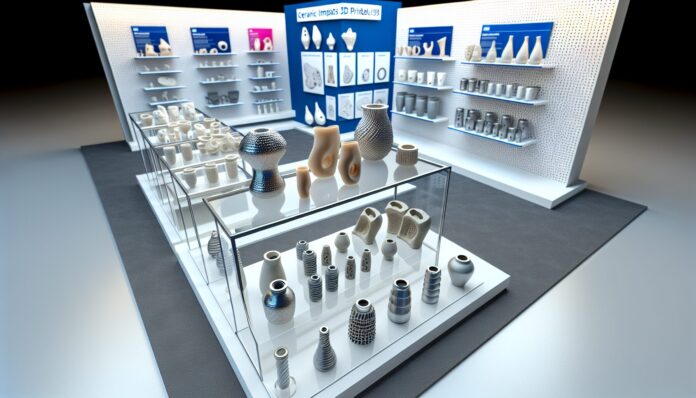At Formnext 2023, one of the world’s leading trade shows for additive manufacturing, Austrian ceramic 3D printing specialist Lithoz made a powerful statement. Rather than focusing on conceptual prototypes, the company presented a range of real-world production parts, underlining the maturity and scalability of its ceramic additive manufacturing (AM) technology.
Real-World Ceramic 3D Printing Applications
Visitors to the Lithoz booth were greeted with a display of functional ceramic components already in use across various industries. These included parts for aerospace, medical, and energy sectors—industries where ceramics offer unmatched performance in terms of heat resistance, biocompatibility, and wear resistance.
One standout example was a ceramic heat exchanger, designed for high-temperature applications. Thanks to the precision and complexity achievable with Lithoz’s LCM (Lithography-based Ceramic Manufacturing) technology, the part featured intricate internal channels that would be impossible to produce using traditional ceramic manufacturing methods.
Another highlight was a biocompatible ceramic spinal implant, demonstrating the potential of ceramic AM in the medical field. The implant’s porous structure, optimized for bone ingrowth, was made possible by the design freedom of 3D printing and the material properties of ceramics.
Scalability and Industrialization of Ceramic AM
Beyond showcasing parts, Lithoz emphasized the scalability of its technology. The company’s latest CeraFab System S65 printer was on display, designed for industrial-scale production. With its modular architecture and high throughput, the S65 enables manufacturers to scale from prototyping to full production without compromising part quality.
“We’re not just talking about what’s possible—we’re showing what’s already being done,” said Lithoz CEO Dr. Johannes Homa. “Our customers are producing thousands of parts per year, and we’re here to support that growth with reliable, scalable solutions.”
To further support industrial adoption, Lithoz has also developed a range of ceramic materials tailored for different applications, including alumina, zirconia, and silicon nitride. These materials are optimized for use with the company’s LCM process, ensuring consistent quality and performance.
LCM Technology: Precision and Performance
Lithoz’s proprietary LCM technology is at the heart of its success. The process uses a light-based system to selectively cure ceramic-filled photopolymer resins layer by layer. After printing, the green parts undergo debinding and sintering to achieve full density and mechanical strength.
This approach allows for extremely high resolution and surface quality, making it ideal for applications where precision is critical. For example, in the electronics industry, LCM can produce ceramic substrates with fine features and tight tolerances, enabling the miniaturization of components.
Moreover, the LCM process supports complex geometries, such as lattice structures and internal channels, which are difficult or impossible to achieve with conventional ceramic forming techniques.
Future Outlook for Ceramic 3D Printing
The presence of production-ready parts at Formnext 2023 signals a turning point for ceramic 3D printing. No longer confined to research labs or niche applications, the technology is now being adopted by mainstream manufacturers seeking high-performance materials and design flexibility.
As industries continue to demand more efficient, lightweight, and durable components, ceramic AM is poised to play a key role. Lithoz’s commitment to innovation and industrialization positions it as a leader in this growing field.
With ongoing advancements in materials, hardware, and process control, the future of ceramic 3D printing looks brighter than ever. And as Lithoz demonstrated at Formnext, that future is already taking shape today.
Source: 3D Printing Industry

